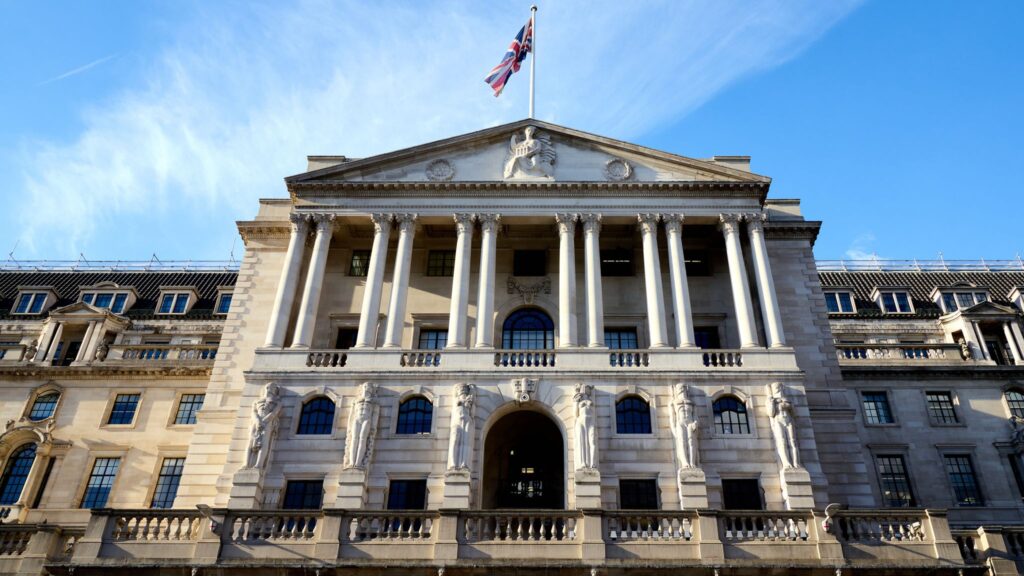
Bank Of England In a surprising turn of events, the Bank of England has decided to keep its interest rates unchanged at 5.25%, defying expectations of a 0.25% hike to 5.5%. This decision marks the first pause in interest rate increases since the central bank initiated the current cycle of hikes back in December 2021. The unexpected move has had ripple effects on the financial landscape, particularly impacting the value of the pound.
The Status Quo
Bank Of England A Brief Overview
The Bank of England, often referred to as the “Old Lady of Threadneedle Street,” is the United Kingdom’s central bank. Its primary responsibilities include regulating the country’s monetary policy, issuing currency, and supervising the banking sector. One of its key tools for controlling economic conditions is the manipulation of interest rates.
The Current Economic Landscape
Before delving into the Bank of England’s latest decision, it’s essential to understand the economic context in which this move has taken place. The global economy has been grappling with a unique set of challenges, including the ongoing COVID-19 pandemic, supply chain disruptions, and inflationary pressures. These factors have made central bank decisions more critical than ever.
A Surprise Decision
Bank Of England Expectations vs. Reality
Economists and financial experts had widely anticipated a 0.25% increase in interest rates during this meeting. Such a move was seen as a proactive measure to combat rising inflation and stabilize the economy. However, the Bank of England opted for a different path, leaving rates untouched.
Implications for the Pound
The immediate impact of this decision was felt in the foreign exchange market, with the British pound seeing a sharp decline in value against major currencies. Investors and traders had priced in the anticipated rate hike, and the unexpected status quo left them scrambling to adjust their positions.
The Factors at Play
Bank Of England Inflation Concerns
One of the primary drivers behind the expected rate hike was the growing concern over inflation. Prices of goods and services had been steadily rising, eroding the purchasing power of consumers. A rate increase was seen as a means to curb inflation and prevent it from spiraling out of control.
Economic Uncertainty
The decision to maintain the current interest rate can also be attributed to the uncertainty surrounding the global economy. With the ongoing pandemic and geopolitical tensions, central banks are cautious about making abrupt changes that could disrupt financial markets.
The Road Ahead
Bank Of England What Lies Ahead?
The Bank of England’s unexpected decision has left many questioning the central bank’s future actions. Will they continue to hold rates steady, or is this just a temporary pause? The answers to these questions will depend on how economic conditions evolve in the coming months.
Impact on Borrowers and Savers
For borrowers, the decision to keep interest rates unchanged may come as a relief, as it means borrowing costs will remain stable. However, savers may find it more challenging to earn decent returns on their savings in a low-rate environment.
Conclusion
The Bank of England’s surprising move to maintain interest rates at 5.25% has sent shockwaves through the financial world. It defied expectations and left many wondering about the central bank’s future course of action. In an era of economic uncertainty and inflationary pressures, central bank decisions take on added significance, influencing not only financial markets but also the everyday lives of individuals.
FAQs
1. Why did the Bank of England decide to keep interest rates unchanged?
The Bank of England opted to maintain interest rates due to concerns about inflation and economic uncertainty. They believe this is the best course of action for the current economic landscape.
2. How did the foreign exchange market react to this decision?
The British pound saw a significant drop in value against major currencies following the unexpected decision to keep interest rates steady.
3. What impact does this decision have on borrowers and savers?
Borrowers can expect stable borrowing costs, while savers may face challenges in earning attractive returns on their savings in a low-rate environment.
4. Will the Bank of England continue to keep rates unchanged?
The central bank’s future actions will depend on how economic conditions evolve in the coming months. It remains uncertain whether this is a temporary pause or a long-term strategy.
5. How does this decision affect the global economy?
The Bank of England’s decision has implications for the global economy, as it reflects the challenges and uncertainties facing central banks worldwide in the current economic climate.
